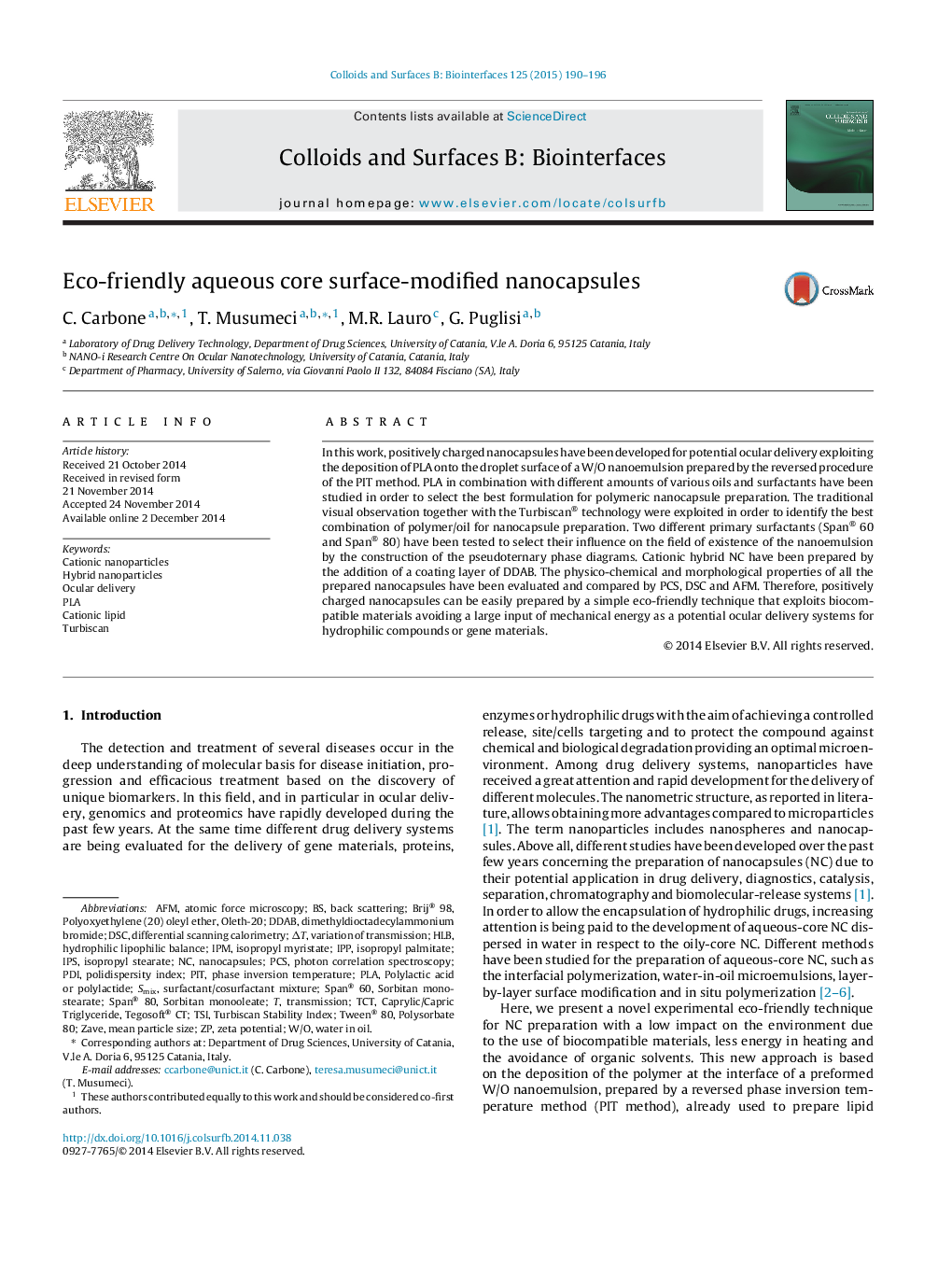| Article ID | Journal | Published Year | Pages | File Type |
|---|---|---|---|---|
| 599583 | Colloids and Surfaces B: Biointerfaces | 2015 | 7 Pages |
•A new application of Turbiscan® technology allowed us to select the most suitable oil.•W/O nanoemulsion was obtained by a reversed PIT method.•PLA deposition onto nanoemulsion's droplets allows to obtain polymeric nanoparticles.•Cationic hybrid aqueous core nanocapsules were prepared by the addition of DDAB.•DDAB enhances a better organization of the nanoparticulate system's components.
In this work, positively charged nanocapsules have been developed for potential ocular delivery exploiting the deposition of PLA onto the droplet surface of a W/O nanoemulsion prepared by the reversed procedure of the PIT method. PLA in combination with different amounts of various oils and surfactants have been studied in order to select the best formulation for polymeric nanocapsule preparation. The traditional visual observation together with the Turbiscan® technology were exploited in order to identify the best combination of polymer/oil for nanocapsule preparation. Two different primary surfactants (Span® 60 and Span® 80) have been tested to select their influence on the field of existence of the nanoemulsion by the construction of the pseudoternary phase diagrams. Cationic hybrid NC have been prepared by the addition of a coating layer of DDAB. The physico-chemical and morphological properties of all the prepared nanocapsules have been evaluated and compared by PCS, DSC and AFM. Therefore, positively charged nanocapsules can be easily prepared by a simple eco-friendly technique that exploits biocompatible materials avoiding a large input of mechanical energy as a potential ocular delivery systems for hydrophilic compounds or gene materials.
Graphical abstractFigure optionsDownload full-size imageDownload as PowerPoint slide
